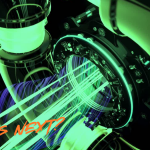Why Light, Lasers, & Leadership in Fusion Energy
What’s Next…
Imagine cities powered by the same force that lights the sun. Clean. Safe. Nearly unlimited. That future isn’t fantasy, it’s the world of fusion energy. Scientists, engineers, and innovators worldwide are working diligently to make it a reality. According to an article in The Hill, the United States must lead in this field or risk falling behind globally.
Now add a second layer: this isn’t just about physics. It’s about light lasers, optics, and photonics, and about regions that already dominate those technologies. One such place is Tucson, Arizona, home to the University of Arizona and the region known as Optics Valley. Tucson is not just a nice place with good optics firms. It’s a strategic asset.
Combining national strategy with regional strength could set America up to win the next big clean-energy race.
Why Fusion Matters Now
Fusion occurs when light atoms, such as deuterium and tritium (hydrogen isotopes), collide to form helium, releasing vast amounts of energy in the process. Unlike nuclear fission reactors of today, fusion promises no meltdown risk and little long-lived radioactive waste. It utilizes fuel that is abundant and could pave the way for energy abundance.
The Hill article highlights the fact that U.S. leadership is at stake. If other countries take the lead in commercializing fusion, America risks losing both clean-energy dominance and economic opportunities. The message: this is a strategic mission.
In my “America First…” article, I pointed out how previous acts, such as the CHIPS and Science Act and the National Defense Authorization Act for Fiscal Year 2021, laid the prototypes for strategic technology policy. Now, fusion is the next frontier.
Why Lasers, Optics & Photonics Are the Game Changers
Fusion engineering isn’t just about heating and magnetizing plasma; it’s about controlling light and precision optics. High-powered lasers compress fuel, photonic sensors measure what happens inside the reactor, and extreme optics withstand the brutal conditions of heat and radiation.
In your article, you noted how the region of Optics Valley is already rich in companies and talent that manufacture lasers, coatings, sensors, and precision optics. The University of Arizona’s optical sciences programs train engineers who design and develop those systems every day.
This means that southern Arizona doesn’t just have a little connection to fusion; it has a direct connection. If the national strategy calls for lasers and precision optics to power commercial fusion, then Optics Valley is uniquely positioned to deliver.
What America Needs to Do and What Optics Valley Should Lead
Build a national strategy. Just like earlier semiconductor legislation, America needs a “Fusion for America” playbook: federal incentives, R&D funding, manufacturing scale-up, and workforce training. That means writing a policy that aligns industry, research labs, and regions of advantage.
Localize key technologies. For fusion to be deployed at scale, families of components, laser drivers, optics coatings, target manufacturing, and diagnostics must be built on-shore. That’s where supply chain security, domestic jobs, and national leadership come together.
Elevate the photonics stack. The lasers and optical systems that power fusion need to become domestic strengths. That means investing in diode-pumped lasers, high-repetition drivers, robust mirrors/coatings, and high-speed diagnostics. Regions like Optics Valley already make significant contributions to that.
Train the workforce. Fusion isn’t decades away. The work starts now. That means training technicians in optics, photonics, laser systems, and materials science so that when commercial fusion plants begin construction, the talent is ready.
Leverage regional clusters. Tucson’s ecosystem, university, industry, and supply chain are ripe. By aligning that cluster toward fusion-enabling technologies, the U.S. can turn a regional strength into a national asset.
Why Tucson / Optics Valley Matters
Tucson is not just a nice place with good optics firms. It’s a strategic asset.
The University of Arizona’s Wyant College of Optical Sciences is world-class. It produces engineers who design, build, and operate lasers, sensors, and optical systems. Many local firms supply laser modules, coatings, and precision optics used in aerospace, defense, and emerging energy technologies.
Suppose a national fusion strategy identifies optics/lasers as a core enabler (and it should). In that case, the region around Tucson becomes a logical hub for innovation, manufacturing, and workforce training for fusion. That creates jobs, regional economic growth, and national leadership in one package.
Challenges Are Real, But So Are the Opportunities
It’s not enough to have a great university and a regional cluster. Fusion is hard. Sustained energy output, material durability, and cost-effectiveness all remain significant engineering challenges.
But the time is now. The Hill article warns that other nations are moving quickly, and the U.S. lead is not guaranteed. My “America First…” article emphasizes that America cannot repeat past mistakes where national inventions were scaled overseas while leadership slipped.
By combining the strengths of photonics and optics with national strategy and regional ecosystems, America can leap forward. Southern Arizona can play a significant role in that leap.
In Conclusion
Fusion energy offers a future where our power is clean, abundant, and built on light. America has the chance to lead, but only if it moves with vision, coordination, and speed.
Tucson’s Optics Valley is a powerful asset in that race. With world-class optics firms, a top university, and a culture of innovation, the region can help power the launch of a fusion economy.
If America aligns policy, capital, and industrial clusters just like it did for semiconductors, then the lasers and optics made in southern Arizona may one day help light the cities, homes, and data centers of the world.
It’s an ambitious dream. But lasers, optics, and fusion are a powerful trio. And if we play it right, America doesn’t just participate in the future, it leads it.








